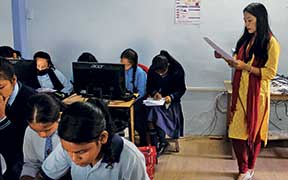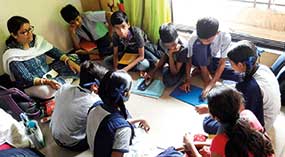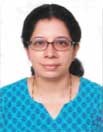Sujata Bhonsale
Often, as we reflect on our time in school, many of us invariably remember our teachers and their influence on our lives, both academically and personally. While some of us can confidently identify at least one teacher who made a difference and helped us traverse the sometimes confusing and difficult terrain of schooling and adolescence, it is likely that negative memories of school are also often associated with a teacher/s. What about teachers themselves? How do they remember some of their own teachers from school?
In pre-service teacher education many student teachers tend to bring in assumptions about teaching and teachers such as ‘everything depends on the teacher’, ‘the teacher is the expert’, etc., which can sometimes make their learning to teach problematic. So I was curious to know what kind of schooling experiences continued to influence teachers even after a few years of teaching. Do they continue to operate under these assumptions? In what way, if any, have their own teacher/s continued to shape the way they teach in their classrooms today? Armed with these questions, I spoke to four teachers from slightly varied backgrounds to find out the influence of their personal school history on their classroom transactions.
Smita Sawant is a primary school teacher in a Zilla Parishad school in Raigad district. She has been teaching for nearly 15 years across primary schools in semi-urban areas. Ninety per cent of her students come from outside the state and the biggest challenge for her is helping her students understand the language of the medium of instruction in the school, Marathi.
As a student, she observed her teachers closely and from their demeanour and interactions with students in general, she felt that the teaching profession was a noble one and therefore aspired to be one.
About the influence of a teacher on her own teaching style, she shares the experience of a teacher from her high school days. Her class predominantly had students from the forward caste while she and some others who belonged to other castes and who were considered average students, were relegated to the backbenches. She recounts how the teacher would always address the students who sat in the front of the class and she was never given an opportunity to speak or express herself. Being ignored by the teacher, she always felt that she was not as competent as the frontbenchers. It was only while doing her D.Ed that she developed her self-worth and started believing in herself.
This experience, she says, sensitised her as a teacher to be mindful of including every student in classroom discussions. As language often tends to be a barrier in her class, she is always trying new strategies to engage all her students equally. Given the socio-economic background of her class 5 students (children of mostly urban-poor, and migrant labourers), she feels that developing a positive self-esteem in her students is vital to not only motivate them to learn but also to come to school in the first place. “I want all my students to feel that I count for something,” she says and this for her has been the biggest takeaway from her interactions with her own high school teachers.

Pradita Nambiar is a teacher in an alternative school in Hyderabad. She has taught primary school students earlier and is now teaching pre-primary/kindergarten at the same school. For Pradita, her history teacher’s classes from school continue to inspire even today. Her teacher’s method of teaching history through stories has stayed with her from her school days and has encouraged her to use stories to teach concepts across all the subjects that she teaches now. She finds that this way of teaching engages the students more positively. Pradita also shares how she has learned not to pick on students who are reluctant to answer in her class. She learned this from observing some of her own teachers back in school, who picked on students who didn’t come forward to answer in classroom discussions. Getting no response from the student, the teacher invariably put her/him down. This she feels lowered the students’ confidence even further. In her own class today, she does not coax reluctant students to speak up as she feels many are actually good listeners and in one to one interactions with them she is able to find out if he/she has understood the concept being taught.

Drawing from their own schooling experiences, it is clear that these teachers seem to believe in the importance of affective factors such as self-confidence and self-esteem for student learning. Analyzing their own teachers from a personal and pedagogical perspective, they have tried to integrate the learnings from their positive and negative experiences of schooling, in their own approach to student learning. Their experiences seem to have helped them develop a strong belief in a student’s participation in and ownership of the learning process and in the importance of developing a relationship with their students. It is heartening to see that these teachers are using their agency in working on the negative experiences of their personal school history. And in doing so, in many ways they are signalling a change in their own role from being mere transmitters of knowledge to being active participants in the learning process.
Reference: Britzman, D.P. (1986). Cultural myths in the making of a teacher: Biography and social structure in teacher education. Harvard Educational Review, Vol.56, No.4, p.442-455.
 The author is a research associate in an education technology project at Tata Institute of Social Sciences (TISS). She can be reached at sujata_bhonsale@hotmail.com.
The author is a research associate in an education technology project at Tata Institute of Social Sciences (TISS). She can be reached at sujata_bhonsale@hotmail.com.
